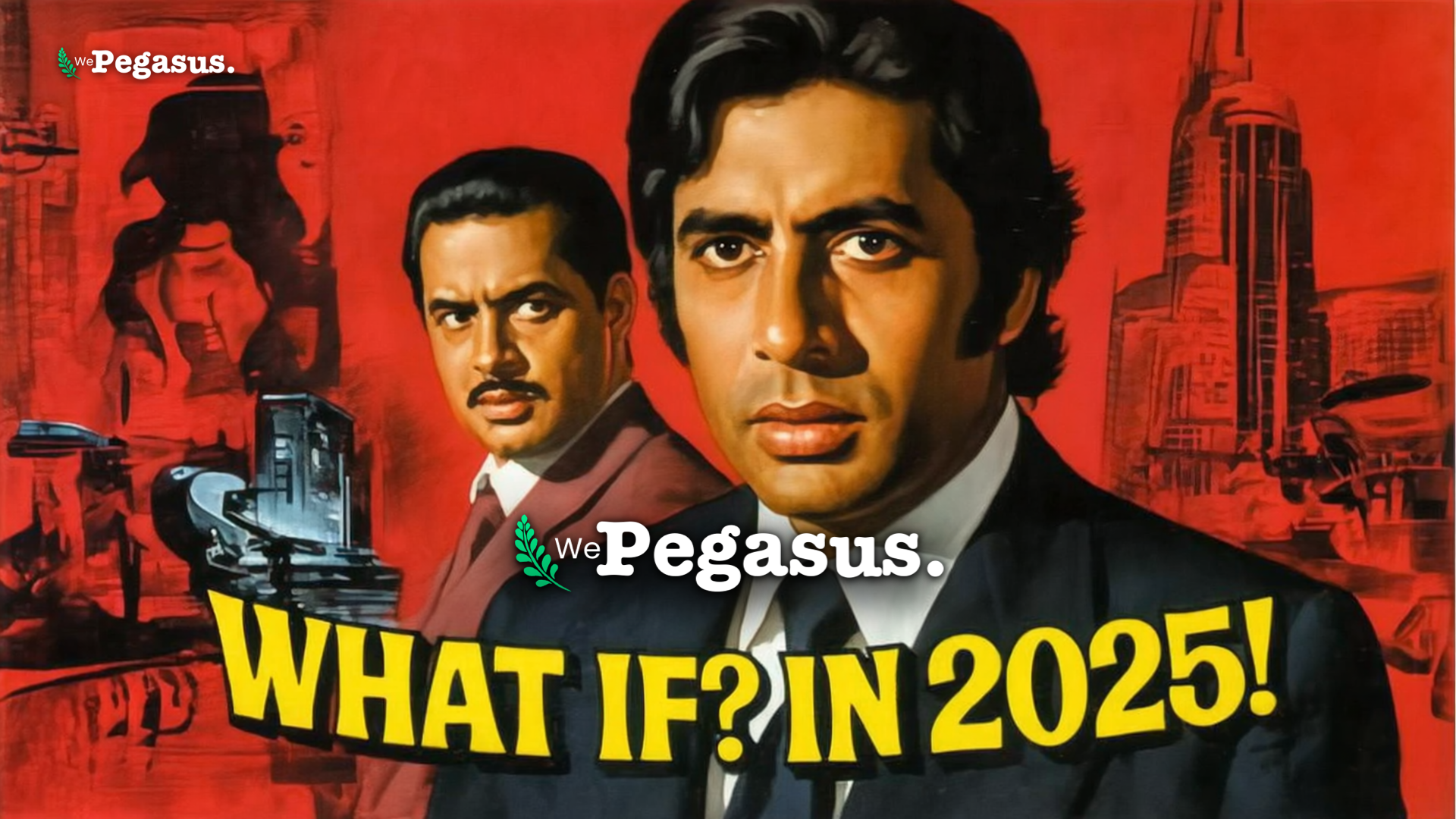“I was rejected from All India Radio.”
— Amitabh Bachchan
He’s said it often. Sometimes with a smile, sometimes with reflection. The voice that would later become the sound of India — deep, commanding, unforgettable — was once called “not suitable.”
And yet, in that rejection lies a modern truth.
Because in 2025, it may not be a voice that gets dismissed.
It may be something else — a badly formatted digital portfolio, a chatbot-flagged essay, a missing design layer.
And that brings us to a pressing question:
Would the young Amitabh Bachchan even get accepted today?
Act I: The Rejection That Still Resonates
Back in the 1960s, Amitabh Bachchan was just a student at Delhi University — English literature major, poetry lover, theatre kid.
No industry connections. No formal training. Just stories to tell and a voice that made people stop and listen.
When he applied to All India Radio, he was rejected for that very voice.
Too unusual. Too bold. Too much.
And yet, the very thing they rejected became his signature.
Now imagine that same student trying to enter a top university in 2025 — Yale School of Drama, NYU Tisch, or even FTII.
Would he even pass the algorithm?
Act II: The Age of AI-Enhanced Admissions
Today, the gatekeepers aren’t radio producers or college deans.
They’re algorithms, dashboards, and auto-sorting systems.
- Over 38% of students globally now use AI tools like ChatGPT or Midjourney in their college applications.
- In India, “AI-enhanced portfolios” are becoming common in applications to design schools, liberal arts universities, and global programs.
- Deepfake audition reels, GPT-written SOPs, Midjourney art collections — all part of the new norm.
It’s polished. It’s smart.
But it’s also hard to tell what’s real anymore.
Act III: If Bachchan Applied Today…

Imagine Amitabh in 2025.
He uploads a monologue in Hindi — raw, uncut, no subtitles.
His personal essay is poetic but informal.
His portfolio? A few phone-shot play clips and a notebook filled with handwritten ideas.
Compare that to a classmate’s application:
- AI-polished personal essay
- Scripted video with background music
- Portfolio designed in Figma with Midjourney visuals
Who do you think gets shortlisted?
Act IV: When Authenticity Gets Filtered Out
A 2023 survey by the National Association for College Admission Counseling reported:
- 62% of admissions officers say it’s increasingly hard to identify AI-generated content.
- 14% higher dropout rates were observed among students who submitted heavily AI-enhanced creative portfolios.
We’re no longer assessing potential. We’re assessing polish.
That’s the core of the “Amitabh Problem” — when potential is raw and unfiltered, it risks getting buried under the shine of synthetic storytelling.
Act V: But AI Isn’t Always the Villain
Let’s not demonize AI.
For many students — especially first-gen, ESL learners, or students from under-resourced regions — AI is a tool of access.
- It helps translate thoughts into polished writing.
- It helps visualize ideas they can’t afford to get professionally designed.
- It closes the gap between talent and tech literacy.
In some ways, it’s doing what AIR never did for Bachchan — level the field.
Act VI: The Bachchan Standard — What Needs to Change
To honor raw potential, universities must evolve.
1. Ask for Process, Not Just Product
Let students explain how they created something — not just submit it.
2. Require AI Declarations
Make AI use transparent, not shameful. Add a “Tools Used” field.
3. Include Unedited Performance Submissions
Encourage spontaneous takes — one-shot poems, stories, voice memos — not just highly-edited work.
4. Shift to Live Evaluations
Group problem-solving, storytelling interviews, real-time critiques. Let the human surface.
Act VII: What We Lose If We Don’t
If we don’t shift focus from polish to promise, we lose:
- The quiet introvert who shines in conversation, not video
- The student who creates magic with constraints
- The late bloomer who hasn’t yet found their voice — but will
We lose the Amitabhs.
Final Thought: The Voice That Found Its Way
Amitabh Bachchan didn’t come pre-packaged.
He wasn’t born with marketability. He built it — from the outside in.
Today, we risk rejecting the very students who might one day change culture, policy, or the arts — because their applications aren’t shiny enough.
The world almost missed his voice once. Let’s not make the same mistake again.


